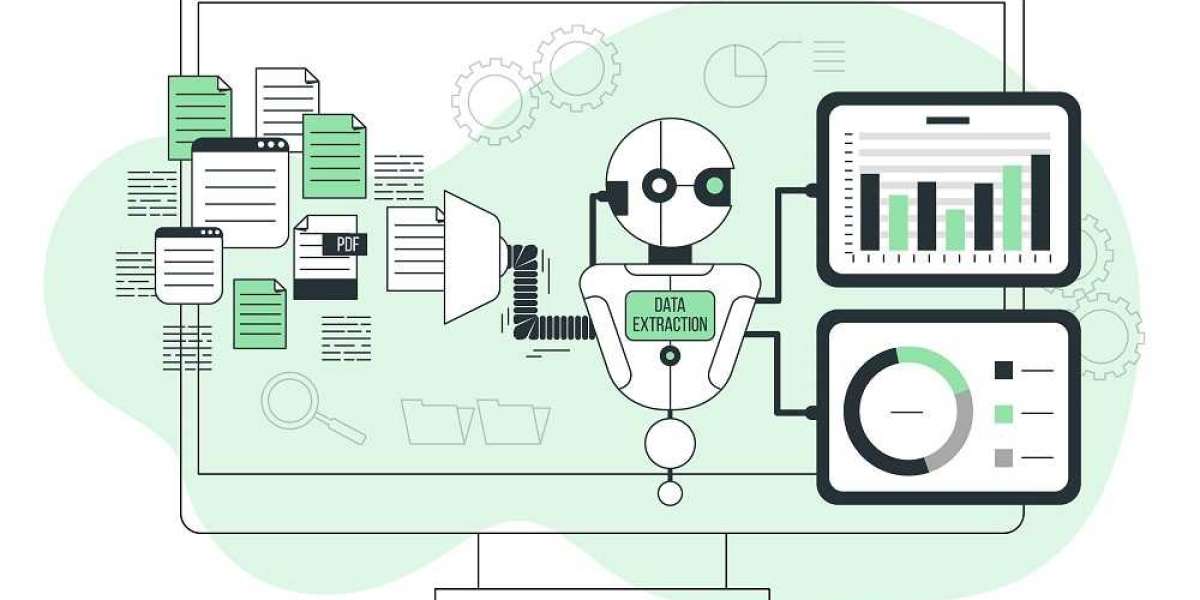To increase corporate productivity, machine learning is utilised in business forecasting. Data and observations are utilised to start the learning process. examples, directions, or first-hand experience, for instance. They are offered so that the computer can analyse data patterns and come to better conclusions in the future.
Using the hundreds of metrics at your fingertips and taking each one into account for the particular prediction at hand allows you to prepare considerably more correctly than with manual approaches, which is one of the primary advantages of deep learning for business forecasting.
A machine learning-based system can be fed with as many business indicators and KPIs as you have access to. Whether your forecast is affected by 100 factors or 100,000, machine learning may find patterns and connections that a traditional (or human) system just cannot.
Not only can machine learning forecasting deliver the precision you need, but a turnkey system is also fully autonomous, continuously updating estimates as trends change to help you make better decisions.
How Should Machine Learning Be Used for Forecasting?
Whatever model is chosen, the overall acceptance of ML practices appears to be as follows:
- Establish business goals and make advantage of any internal data that is accessible.
- Get outside data by searching for market research reports, trends, GDPs, customer reviews, etc.
- Sort, clean, label the information (if needed)
- Identify the set of problems that forecasting will be used to tackle.
- To act as the initial benchmark, pick a baseline model (usually a basic extrapolation or a tree-based model).
- Model performance can be improved by utilising more intricate ML models or altering the data.
- Once comfortable findings have been attained, the model is used.
Business Applications using Machine Learning Forecast
Here are a few business applications for machine learning predictions-
1. Predicting financial data
Businesses endure disruption in their performance and operations without a financial projection, and C-level executives are more prone to make bad choices. Due to this, companies utilise ML forecasting, which emphasizes understanding the business drivers instead of handling tedious activities. While reducing the usage of unproductive tactics and human error, ML financial planning also assists with forecasting supply, demand, inventories, future revenues, expenditures, and cash flow.
For instance, those who are involved with the company want to know the firm's turnover and crucial elements for development during the forthcoming financial quarter to understand and appraise areas for improvement. We can develop machine learning prediction models that use previous key business metrics for the organization and current turnover data from prior periods using convolutional or regression models.
Seasonal data and other influencing factors will be used to predict the necessary metrics for the future. In this case, company owners can arrange the following period effectively.
2. Predicting the supply chain
The increasingly globalised and sophisticated supply chain management could be radically transformed by ML. Businesses may respond to problems and threats more quickly and avoid under and overstocking by using ML-based forecasting systems. Machine learning algorithms for forecasting can discover patterns in a training sample and then apply those patterns to fresh data. Consequently, machine learning enhances the processes of inventory management, transportation and distribution, anticipating supply chain risks, and supplier selection and segmentation.
Take the next illustration of supply chain forecasting using machine learning as an example. The chain of hypermarkets runs about 100 locations with an average of 50,000 SKUs per store. For such a big network, automated warehouse replenishment is necessary. There are two key benefits in this instance:
- There's no reason to start stocking up on things that are difficult to sell.
- Regularly purchased goods must be supplied on time.
Based on historical warehouse replenishment statistics and data demonstrating how quickly specific products sell, we can create an ML model for estimating the number of goods per SKU. Several time frames could be used to depict the prediction.
3. Forecast Commodity Prices
Price prediction algorithms establish the price at which a product should be sold to satisfy customer demand, and company expectations, and maximize sales. Machine learning, or artificial intelligence, is frequently used in commodity price predictions. With minimum human input, this approach helps with the automatic separation of data that is organized and unorganized and the development of models to forecast real-time commodities prices. Items that are typically indistinguishable from human sight can be made known, enabling manufacturers to plan ahead, dealers to make pricing predictions, and purchasers to plan more effective purchases.
Business owners frequently want to understand how future price changes for a certain product will affect their business. The beneficial effect could also be used by taking into account external data from other parties that affect prices, such as the rate of inflation, holidays, seasonal trends, etc.
Prices of different types of commodities can be forecasted like:
- Sugar Prices
- Cotton prices
- Palm oil
- Gold
- Coffee
- Natural Gas, etc.
4. Detecting Fraud
Businesses should work more to build anti-fraud measures, according to the surge in worldwide digital fraud rates. ML algorithms can identify questionable financial transactions by learning from past data. They are currently employed successfully in a variety of industries, including e-commerce, finance, healthcare, and fintech.
A chain cafe owner could want to evaluate employee productivity, for instance. Finding hidden patterns that let employees cheat is one of the main goals. These and other frauds of this nature may cause monetary loss. To identify and report unusual behaviours, we can build a fraud prevention model using historical data. Managers can then carefully examine anomalies found and pinpoint the underlying reason for such data variances.
5. Predicting sales and demand
Demand changes are a complicated issue that impacts the entire e-commerce sector. To forecast consumer behavior and decide how many products to create or order, businesses, especially manufacturers, employ machine learning (ML) demand forecasting. With ML models, it is feasible to avoid having too much stock or running out of it. Such a forecasting strategy also makes it possible to understand the target market and the competition better.
Let's say a chain of restaurants wishes to predict demand in advance. The company will gain from it in several ways:
- to get an idea of how many dishes the restaurant will sell so that the food supply can be prepared in advance
- to understand and specify how many personnel are needed to deliver exceptional customer service
- to plan a suitable and timely marketing effort
It will be advantageous to start by looking at historical data from earlier times to create demand prediction models and help firms achieve their goals. For instance, we can check Google reviews for both our restaurant chain and the main rivals to see which level of service clients enjoy or dislike.
Advantages of Predicting with Machine Learning
Businesses can better serve consumers and complete orders before running out of stock by using forecasting. As a result, there is a considerable influence on both sales and customer happiness. For example, knowing the demand enables you to control logistics, monitor production costs, and even project the investment return for a new device. As a consequence, ML prediction models give companies the ability to develop their AI more fully and, more significantly, to address business issues by looking at historical data.
1. The capacity to generate more accurate forecasts, Faster
Financial forecasting can be liberated from the time-consuming labour of data collection and reconciliation due to machine learning-enabled forecasting. The tools can be configured to automatically gather and reconcile big data sets. Moreover, machine learning methods can help uncover business drivers and drastically lower forecast mistakes.
Machine learning techniques are intended to acquire information over time and forecast which elements will have the biggest impacts on financial performance. Over time, the model becomes more accurate and produces projections more quickly.
2. Use of Additional Data
When employing spreadsheet-driven forecasting procedures, there are limits on the number of sources of data and how much data can be processed and ingested within forecasting models. The quantity and variety of data that may be utilized can be greatly improved by machine learning technologies since they can store more information and analyze it more rapidly than humans.
An organisation that sells consumer goods, for instance, can quickly access data from search engines or social media to determine when buyers are most likely to look for or post about its products. This type of information can help the forecaster gain a better knowledge of the revenue peaks and valleys.
3. Making Value-Added Activities Possible
Analysts are generally obliged to spend the majority of their time on existing prediction processes reconciling or compiling data, rather than working on value-added research and interfacing with the business.
Analysts can focus on understanding operational drivers, key business events, or macro- and microeconomic variables that could have an influence on the organisation instead of these tiresome activities by employing machine learning technology to provide at least a baseline estimate. These findings can then be applied to forecasting. Ultimately, by utilizing machine learning, financial analysts may enhance decision-making and collaborate more with the company's management.
Conclusion
Forecasting in business combines art and science. It blends business intelligence with data science. Business forecasting issues are frequently a result of poor judgement and inexperience. If assumptions are paired with unexpected events, predictions may be incorrect. Machine learning and artificial intelligence will ensure that you avoid making these errors. Machine learning is an effective tool in today's quick-paced culture.
By using algorithms for machine learning and persevering through setbacks, businesses can make the shift to improved performances, sales, and outstanding profit margins. PriceVision is one such tool that paves your path towards easy forecasting of the prices of commodities like metal, forex, energy and agricultural commodities.



